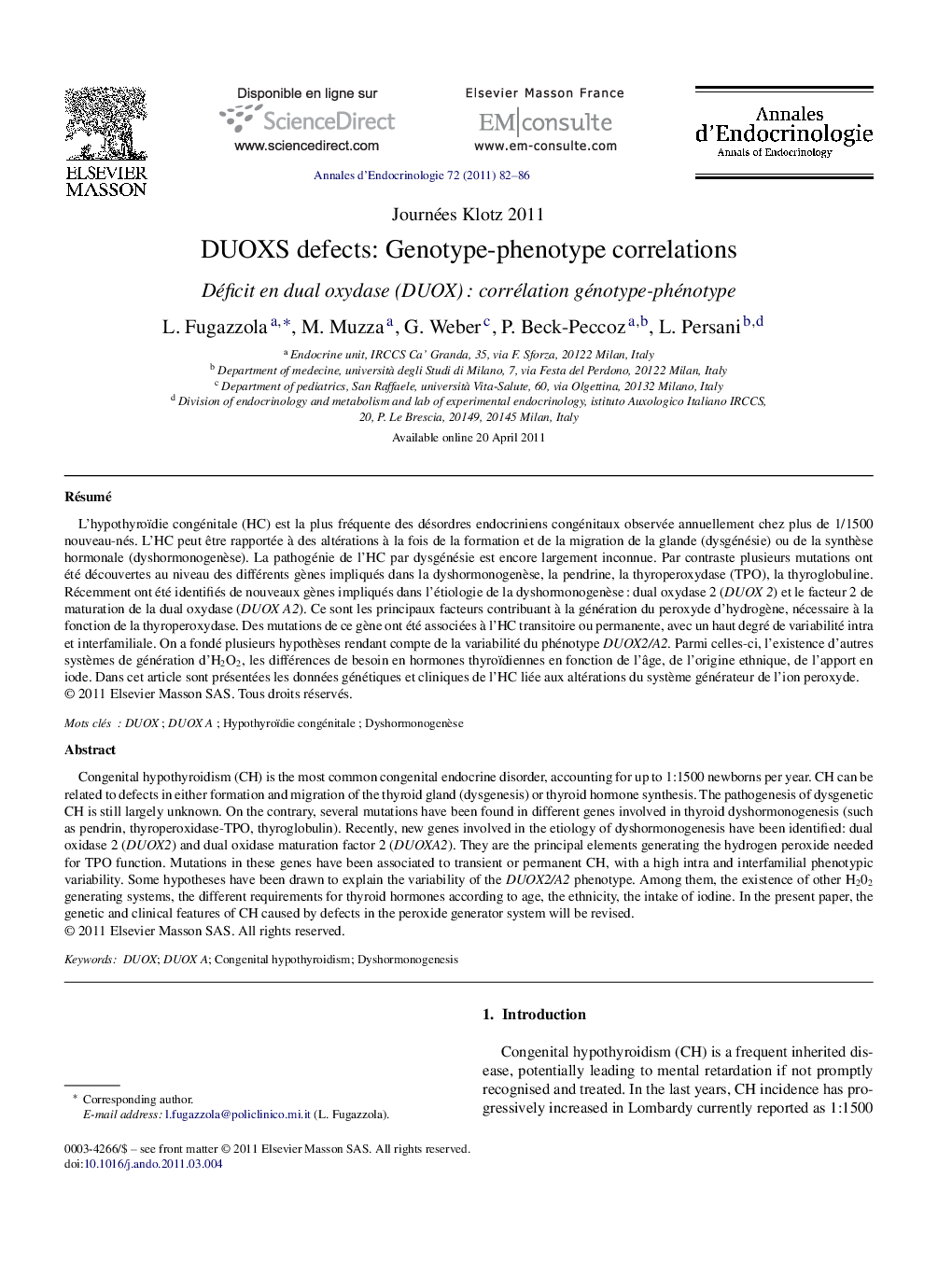| Article ID | Journal | Published Year | Pages | File Type |
|---|---|---|---|---|
| 3252817 | Annales d'Endocrinologie | 2011 | 5 Pages |
Abstract
Congenital hypothyroidism (CH) is the most common congenital endocrine disorder, accounting for up to 1:1500 newborns per year. CH can be related to defects in either formation and migration of the thyroid gland (dysgenesis) or thyroid hormone synthesis. The pathogenesis of dysgenetic CH is still largely unknown. On the contrary, several mutations have been found in different genes involved in thyroid dyshormonogenesis (such as pendrin, thyroperoxidase-TPO, thyroglobulin). Recently, new genes involved in the etiology of dyshormonogenesis have been identified: dual oxidase 2 (DUOX2) and dual oxidase maturation factor 2 (DUOXA2). They are the principal elements generating the hydrogen peroxide needed for TPO function. Mutations in these genes have been associated to transient or permanent CH, with a high intra and interfamilial phenotypic variability. Some hypotheses have been drawn to explain the variability of the DUOX2/A2 phenotype. Among them, the existence of other H202 generating systems, the different requirements for thyroid hormones according to age, the ethnicity, the intake of iodine. In the present paper, the genetic and clinical features of CH caused by defects in the peroxide generator system will be revised.
Related Topics
Health Sciences
Medicine and Dentistry
Endocrinology, Diabetes and Metabolism
Authors
L. Fugazzola, M. Muzza, G. Weber, P. Beck-Peccoz, L. Persani,
